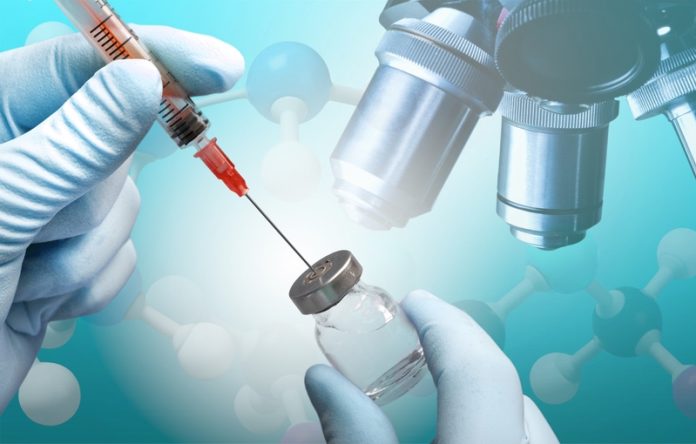Cecilia Van Cauwenberghe from Frost & Sullivan shares her expertise on the world of nanomedicines, with a special focus on depicting human health risks hindering clinical translation
By way of background, although nanomedicines hold the promise of contributing to provide therapeutically efficient and early-stage diagnostics accuracy, the clinical translation of nanomedicines face numerous challenges. Reproducible manufacturing, efficient scaling-up, appropriate formulation, accurate characterisation, in vivo instability and bioavailability, disease heterogeneity, epigenomic impact, potential toxicity, immune response, regulatory barriers, safety issues and ethical concerns, represent some of the multiple hurdles hindering the clinical translation of nanomedicines.
Furthermore, despite the vast number of opportunities in treating complex and rare diseases, including cancer, derived from the advent of nanomedicines development, the dichotomy between nanotechnology and nanotoxicology remains unresolved. Novel methods attempting to address this concern are emerging driven by the advent of new paradigm-shift approaches.
Nanomedicines overview: The nanoscale effect
Singular features and industry impact
Engineered at an unparalleled small scale, nanomaterials display distinct chemical, physical and biological properties in comparison to those observed in the same compounds at a larger scale.
Consequently, it is these features that make nanomaterials extremely versatile and potentially applicable to all industries impacting upon modern lifestyle, including biomedicine. Nevertheless, the same properties could make nanomaterials increasingly unpredictable once interacting with other agents, especially where cells and tissues are concerned.
Nanomedicine constitutes a field of molecular medicine that exploits the ability to control individual properties and combined behaviour of atoms and molecules to build complex functional medicines, ranging from drug delivery vehicles, diagnostic and imaging technologies, analytical tools and theranostic platforms, among many other products, for their application in medicine (Vance et al., 2015; Sharma et al., 2017).
Regarding basic design, a nanomedicines library comprises of a combinatorial approach based on:
1) Size, ranging from 1 to 100 nanometers (nm)
2) Shape, usually sheet, tube, fibre, sphere, cube
3) Surface, varying charge, crystalline structure, coatings, defects, impurities
4) Functionality, related to optical, electrical, mechanical, or chemical behaviour. Regarding targeting design, nanomedicines can be structurally, chemically and thermodynamically built to carry small molecules, genes, antibodies, peptides, or radioactive materials, either inside or at their functionalised surface.
Among the most commonly used nanomedicines, liposomes, polymers, metals and metal oxides and composites, can be cited. Ideally, nanomedicines respond to certain parameters, such as pH, temperature, or light, to trigger a controlled release of their payload. This controlled action also helps to protect both the host from unintended exposure to an active drug or compound and the drug or agent from being detected by the host’s surveillance system or being disintegrated by an adverse microenvironment. Therefore, a great specificity and fine-tuning control must be guaranteed (Etheridge et al., 2013).
Clinical validation: The nanotoxicity potential
Understanding complex biology
Overall, biological effects induced by nanomedicines are associated with their fluctuating, random and sometimes unstable physicochemical behaviour within tissue microenvironments. Naturally, through the complete past decade, notable efforts have been devoted to developing suitable in vivo, in vitro and in silico toxicity testing assays, intending to assess nanotoxicity. One of the first impediments found is related to nanomaterials insolubility and tendency to aggregate, which derives from all types of test sensitivity failures and significant interference with optical measurements, hence remarkably challenging test validation methods.
Furthermore, the extremely high degree of variables because of a potentially unlimited set of nanomedicines constructions, along with the multiple biological functions and pathways impacted by each nanomedicine, make conventional test validation obsolete (Hare et al., 2017).
Accordingly, while the development and expectations of nanomedicines generally increase, a standard methodology for safety testing of nanomedicines and human health risk assessment is yet to be instituted.
Meanwhile, in vitro human cell culture models and in silico approaches combining molecular biology, artificial intelligence and adaptive omics data analytics, more oriented to mimic complex biology, are gaining attention.
Concerning epigenetic regulation
An aspect that cannot be ignored when analysing the human health risks of nanomedicines pertains to their interaction with the genetic material and potential induction of genotoxicity and mutagenicity. By mediating inflammatory responses and oxidative stress process, nanomedicines may trigger epigenetic modifications related to the onset of cancer. DNA methylation, histone modifications and interacting regulative non-coding RNAs, constitute the epigenetic mechanisms strictly regulating gene expression in both the normal and disease microenvironment (Van Cauwenberghe, 2018a).
Consequently, nanomedicines validation requires a solid demonstration of null nanomaterial-induced genotoxicity, that is, nanomedicines must not impair the expression of genes involved in DNA methylation reactions, methylation or acetylation of histones and/or expression of micro RNA (Smolkova et al., 2017).
Meeting artificial intelligence (AI)
Cellular functions are controlled by sophisticated communication routes and signalling pathways between cells, driven by knotty networks of genes, peptides, proteins and metabolites that interact with each other operating as messengers, sensors, regulators, promoters and/or inhibitors of internal and external signals (Halappanava et al., 2017).
Due to their size and ability to interact at tissue microenvironment levels, nanomedicines studies demand an in-depth knowledge of systems biology complexity to carry out sensitive toxicity testing approaches and drug safety evaluation strategies (Agrahari and Agrahari, 2018). Artificial intelligence (AI), including machine learning and deep learning approaches, among many other developments, is prone to improve the complete nanomedicines development process by exploiting large sets, multisource data, to transform them into usable and actionable knowledge and decision-making tools, while leaving behind years of trial-and-error drug development.
By allowing the assessment of dozens of trillion data points in a single tissue sample, the building of Multiphysics modelling and simulation and the correlation of thousands of sources, AI platforms can be optimally suited to identify new drug targets and to design novel nanomedicines, while minimising screening time and enhancing patterns identification, among many other applications. The necessary step is a strong combination of AI-based technology with biological sciences, especially metabolomics.
This branch of science allows carrying out the quantitative and qualitative scrutiny of all metabolites present in the human body because of both normal and disease processes in diverse organs and tissues. Hence, technologies based on metabolomics approaches, enable the translation of biological outputs to therapeutic candidates. Moreover, the assessment of drug efficacy and safety can be carried out by detecting changes in metabolite profiles, which can be measured significantly faster and simpler than genetic or protein responses (Van Cauwenberghe, 2018b).
In addition, the smart synergy between omics science and AI technologies may outstandingly help to maximise the benefits of the unique combination of adaptive, omics-based biological data and advanced AI machine learning algorithms to build accurate predictive models for nanomedicines clinical validation.
Final remarks
The clinical translation of nanomedicines presents several hurdles. Indeed, at the very early stages of discovery and development, nanotoxicity, including nanomaterialinduced genotoxicity, constitutes one of the principal challenges to overcome in the future.
Systems-level approaches appear highly promising, especially due to their capability to evaluate individual parts of the system, such as the tissue microenvironment, very precisely, accurately, promptly, systematically and exhaustively. Leveraging terabytes of data generated by a single experiment by high-content omics technologies, the industry is focusing its attention on artificial intelligence (AI) learning approaches allowing assessing, interpreting, organising and controlling the quality and reproducibility of big data generated by each of these systems. Hence, the impact of nanomedicines on the genome, proteome, lipidome and metabolome can be smartly assessed thanks to the development of AI-based intelligent frames for data mining, model curation, statistics visualisation and pattern correlation.
Although still in progress, this technology convergence is expected to significantly impact upon the healthcare sector soon, enabling the emergence of programmable nanomaterials, highly appropriate to precision medicine approaches.
Acknowledgements
I would like to thank all contributors from industry involved with the development and delivery of this article from the TechVision Group at Frost & Sullivan.
Further reading
1 Agrahari, V. and Agrahari, V., 2018. Facilitating the translation of nanomedicines to a clinical product: challenges and opportunities. Drug discovery today.
2 Etheridge, M.L., Campbell, S.A., Erdman, A.G., Haynes, C.L., Wolf, S.M. and McCullough, J., 2013. The big picture on nanomedicine: the state of investigational and approved nanomedicine products. Nanomedicine: nanotechnology, biology and medicine, 9(1), pp.1-14.
3 Halappanavar, S., Vogel, U., Wallin, H. and Yauk, C.L., 2018. Promise and peril in nanomedicine: the challenges and needs for integrated systems biology approaches to define health risk. Wiley Interdisciplinary Reviews: Nanomedicine and Nanobiotechnology, 10(1).
4 Hare, J.I., Lammers, T., Ashford, M.B., Puri, S., Storm, G. and Barry, S.T., 2017. Challenges and strategies in anti-cancer nanomedicine development: An industry perspective. Advanced drug delivery reviews, 108, pp.25-38.
5 Sharma, R., Mody, N., Agrawal, U. and Vyas, S.P., 2017. Theranostic nanomedicine; a next generation platform for cancer diagnosis and therapy. Mini reviews in medicinal chemistry, 17(18), pp.1746-1757.
6 Smolkova, B., Dusinska, M. and Gabelova, A., 2017. Nanomedicine and epigenome. Possible health risks. Food and Chemical Toxicology, 109, pp.780-796.
7 Van Cauwenberghe, C., 2018a. Innovations in RNA Interference and MicroRNA Therapies. Frost & Sullivan, Drug Discovery Technology, TechVision Opportunity Engines, D951/1C.
8 Van Cauwenberghe, C., 2018b. Innovations in Cell Targeting and Reprogramming. Frost & Sullivan, Genetic Technology News, TechVision Opportunity Engines, D758/78.
9 Vance, M.E., Kuiken, T., Vejerano, E.P., McGinnis, S.P., Hochella Jr, M.F., Rejeski, D. and Hull, M.S., 2015. Nanotechnology in the real world: Redeveloping the nanomaterial consumer products inventory. Beilstein journal of nanotechnology, 6, p.1769.
Cecilia Van Cauwenberghe, PhD, MSc, BA
Associate Fellow and Senior Industry Analyst
TechVision Group, Frost & Sullivan











